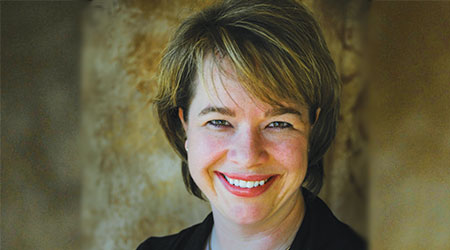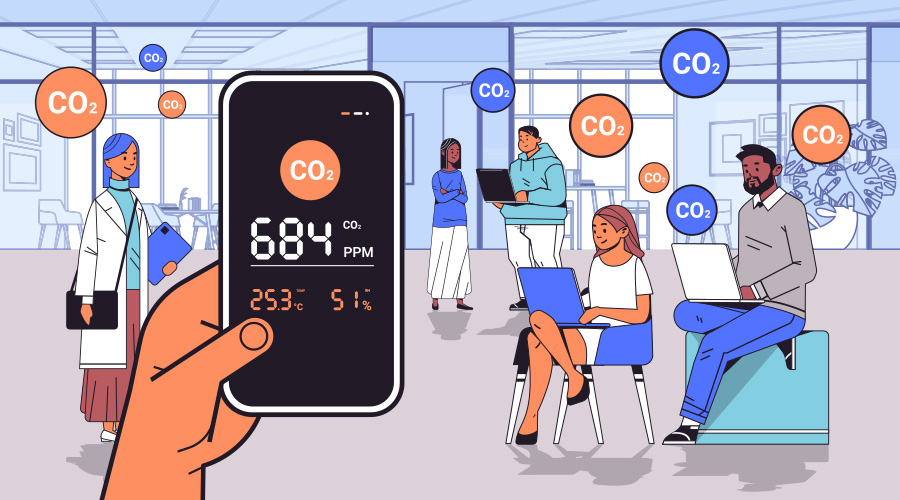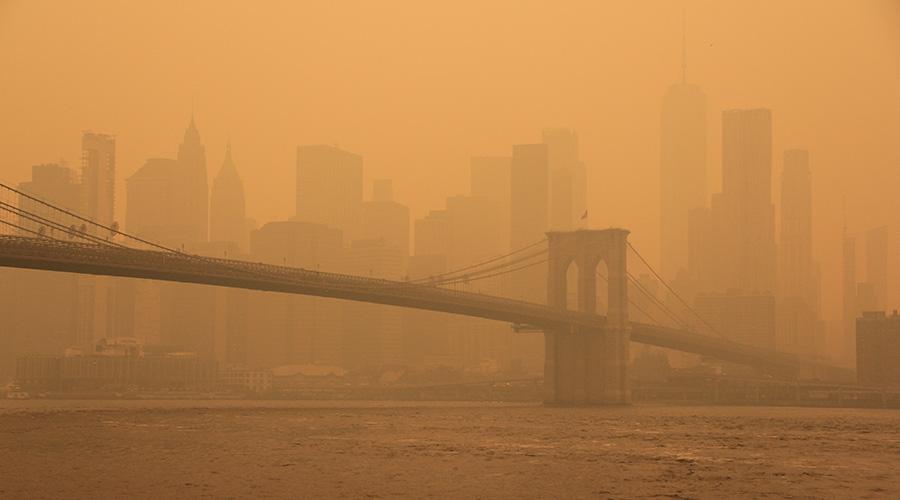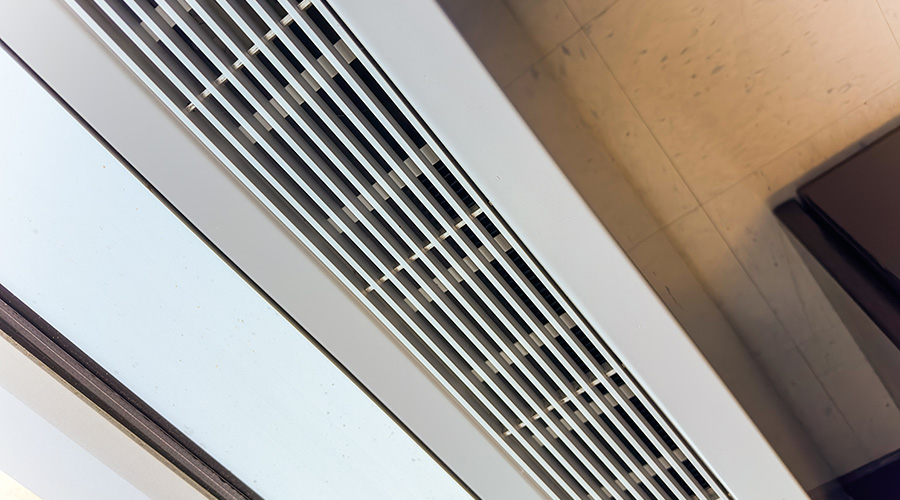4 Air Quality Technologies Can Mitigate Coronavirus Spread
Every technology implemented in a facility, and every policy enacted, should be seen through a risk-management lens.
By Laurie A. Gilmer, P.E.
Fall is traditionally the time when schools are back in session and when maintenance and engineering managers attend professional conferences and meetings across the country. Not this year.
In 2020, the coronavirus and COVID-19 have changed everything. Managers are staying close to home and grappling with the concerns and potential risks of having building occupants and visitors back together under the same roof.
Workplaces are now much different environments to navigate. I recently visited a building where, prior to gaining access, I went through a process that included answering interview questions, sanitizing my hands, changing my mask and having my temperature taken. Back in February, that process would have seemed odd. Now, it seems reasonable.
The coronavirus is thought to spread primarily among people in contact with or in close proximity to one another. It is further thought that it is primarily spread through respiratory droplets that infected people produce when they breathe, talk, sing, sneeze, or cough.
Managers have taken early steps to make buildings safer and healthier, but their challenge continues. What technologies are available to reduce risk of airborne transmission?
In considering these measures, managers need to remember one thing: Every policy we enact, every requirement we issue in facilities should be seen through a risk-management lens. The actions do not guarantee a risk-free environment. That goal is not possible nor is it reasonable. What managers can do is work to reduce risk through a layered approach.
There are several strategies and measures in the indoor-environment category that managers can implement. Their suitability will depend on facility systems, activity types and occupancy make-up.
1. Air filters
Air filters should be part of routine HVAC maintenance and changed as required by a preventive maintenance program. But in response to COVID-19 concerns, the CDC recommends increasing air filtration “as high as possible without significantly diminishing design airflow.”
What are we trying to filter out? When we’re dealing with COVID-19, the target is typically the coronavirus and the carrier particles – respiratory droplets and droplet nuclei – they attach to. Based on research cited in the ASHRAE Coronavirus Response Resources, the particle size of the virus is around 0.1 micrometer, and when it is attached to droplet particles, the size increases to 1.0 micrometer or larger.
Carry that forward to filters, which are rated by minimum efficiency reporting value (MERV) using a testing methodology developed by ASHRAE. Many commercial HVAC systems have filter ratings equivalent to between MERV-6 and MERV-8 which, in the 1.0-3.0 micron range, are between N/A in the case of MERV-6 all the way to 20 percent efficient in the case of MERV-8.
For that same particulate size, MERV-13 and 14 filters are respectively 85 percent and 90 percent efficient. Now it makes sense that the current guidance from ASHRAE is to use filters with a MERV rating of 13 if possible, and preferably increasing to a MERV-14 filter.
This strategy can be a challenge on a few fronts. First, the system must be able to handle the physical size of potentially higher-rated filters. Second, the system must be able to handle the increased pressure drop. Managers need to carefully consider the system and its capabilities before changing to filters with higher efficiency ratings. Third, MERV-13 filters are in short supply right now.
Managers also need to consider the likely sources of virus transmission. According to ASHRAE, “SARS-CoV-2 has been detected as an aerosol in hospitals, and there is evidence that at least some strains of it remain suspended and infectious for three hours, suggesting the possibility of aerosol transmission. However, other mechanisms of virus dissemination are likely to be more significant.”
The most likely methods of coronavirus spread are person to person through respiratory droplets from an infected person communicated by inhalation or touch and through the less dominant method of airborne transmission.
So the recommendation to increase filtration makes reasonable sense when paired with personal hygiene practices. As the CDC recommends, increase filtration as much as possible, and as ASHRAE recommends, implement MERV-13 or MERV-14 if possible. But managers need to balance the decision making process with an understanding of transmission sources, system capabilities and the market availability of filters.
2. Portable filtration units
These units are fairly easy to use and can operate just about anywhere with a power source. Their use in a space can reduce the presence of localized contaminants. According to the U.S. Environmental Protection Agency (EPA), they “may be particularly helpful when additional ventilation with outdoor air is not possible without compromising indoor comfort (temperature or humidity), or when outdoor air pollution is high.”
And of course, managers need to be certain the size and quantity appropriate for the space in question. For example, when considering a portable filtration unit designed to serve up to 500 square feet, managers seeking additional filtration for a 1,700-square-foot space will need three units to provide adequate coverage.
Managers also need to understand that use of filtration units alone is not sufficient to ensure adequate air quality, nor will they protect occupants from the coronavirus. The units are an additional strategy layered on top of proper hygiene measures and properly designed and operated HVAC systems.
3. Ultraviolet technology
Ultraviolet (UV) germicidal irradiation technology has been shown to be effective in maintaining the cleanliness of HVAC coils and condensate drain pans. The technology essentially inactivates microorganisms, reducing growth on wetted surfaces, improving heat transfer and reducing maintenance.
To be effective at treating airborne microorganisms, the system must be designed for sufficient UV exposure in the airstream – typically more intensity than is required for improved maintenance purposes. Systems can be designed for up to 99.9 percent inactivation, according to ASHRAE
UV systems also have been used effectively in upper air zones – typically above 7 feet – within occupied spaces to inactivate certain types of microorganisms, including influenza and tuberculosis. Managers need to consider airflow patterns and reflective surfaces to ensure the system is effective and does not irradiate occupants below the treatment zone.
4. Ionization
Ionization technologies have been promoted as a safe and effective means of cleaning air. Several years ago, concerns developed over the ozone generated by some systems that can cause irritation to the lungs and ultimately result in poorer indoor air quality. According to ASHRAE’s 2015 publication Position Document on Filtration and Air Cleaning, “devices that use the reactivity of ozone for the purpose of cleaning the air should not be used in occupied spaces because of negative health effects that arise from exposure to ozone and its reaction products.” With any air ionization technology, a key issue to look at is the generation of ozone.
After we had been on lockdown for a couple of months, I started receiving questions about needlepoint bipolar ionization (NPBI). The technology purports to reduce contaminants in the air, reduce pathogens in the air stream and improve efficiency as a result of cleaner coils which leads to better heat transfer. The manufacturer of NBPI claims it does not generate ozone, citing UL 867 and UL 2998 as its certifications.
UL 867 is the Standard for Electrostatic Air Cleaners, which addresses the safety of portable and fixed – including duct-connected – electrostatic air cleaning equipment. The standard also is used to evaluate portable and fixed ion generators. UL 2998 is the standard for the Environmental Claim Validation Procedure (ECVP) for Zero Ozone Emissions from Air Cleaners.
Overall, ionization can be an effective means of reducing contaminants in air, and NBPI certainly looks promising. With that said, I would like to see more independent testing of the effectiveness of it on SARS-CoV-2. Regardless, ionization technologies including NBPI, do not eliminate the need for air filtration but instead offer managers another layer in an overall indoor environment strategy.
Managers play a key role in managing their organizations’ built environments, particularly in this difficult pandemic environment. By observing and promoting good personal behaviors, by operating and maintaining systems well and by employing good guidance on technologies and practices to continually improve the indoor environment, managers can perform their most essential role: managing and reducing risk to keep people healthy and safe.
Laurie Gilmer is vice president and chief operating officer with Facility Engineering Associates, www.feapc.com. Gilmer is a published author and instructor and is the first vice chair of IFMA’s board of directors. She also serves on the Northwest Energy Efficiency Council’s Building Operator Certification program advisory committee and the national visiting committee of Building Efficiency for a Sustainable Tomorrow (BEST) Center.
Related Topics:












